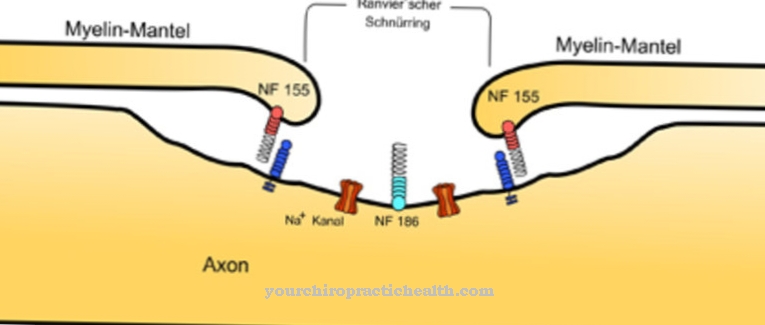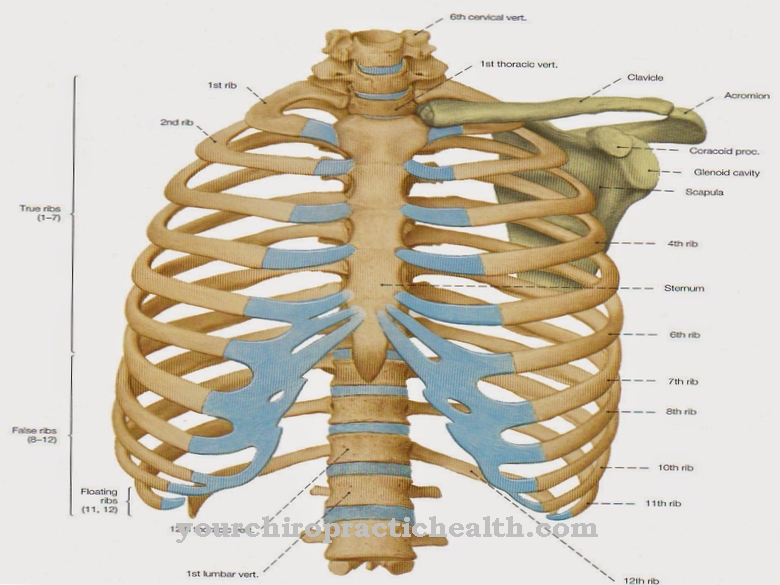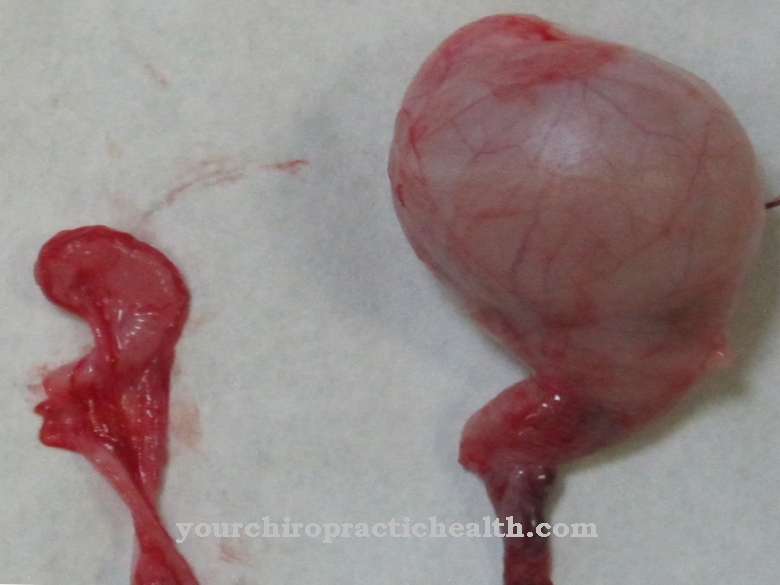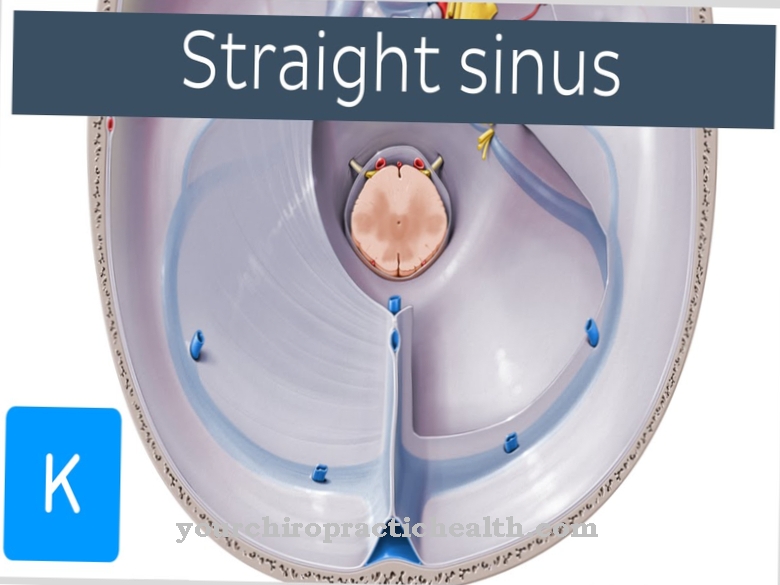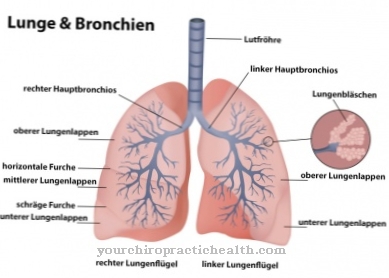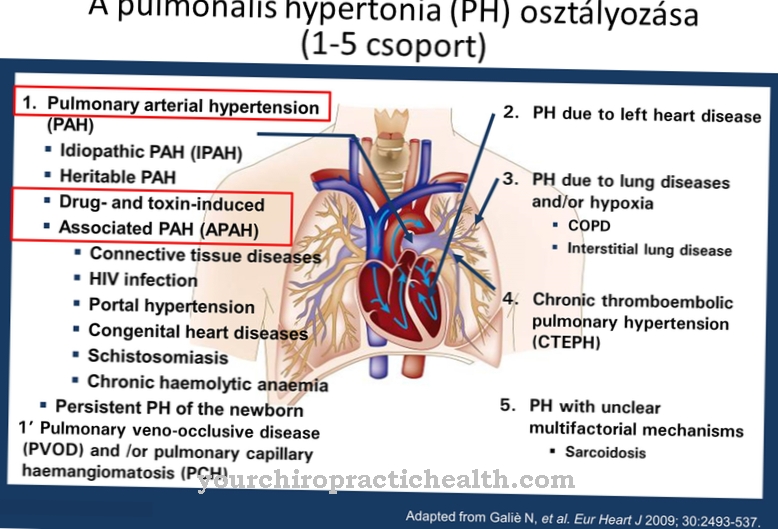As Frontal lobes is an area in the cerebrum that is responsible for controlling movements, emotions and personality. Its structure is just as complex as the number of possible diseases and complaints.
What is the frontal lobe?
The frontal lobe, too Frontal lobe or Frontal lobe called, is one of four parts of the neocortex. It is located in the front area of the cerebrum and takes on important tasks such as controlling motor functions and emotions. It is also considered the seat of personality and self-confidence.
Because of these properties, it is also referred to by some scientists and authors as the "organ of civilization". Its diverse functions mean that diseases or complaints of the frontal lobe quickly affect the psyche of the person concerned. Tumors and dementia, both diseases that often occur in connection with the frontal lobe, lead to changes in the personality structure. The humor center in particular is affected and changes drastically in the course of the diseases mentioned.
Anatomy & structure
The frontal lobe is located in the anterior skull group. Starting at the anterior cerebral pole, it extends to the central sulcus, a furrow that separates the frontal and parietal lobes. The insular cortex is located under the frontal lobe. The frontal lobe can be divided into three areas: the motor area, the premotor area and the prefrontal area. The latter is referred to as the prefrontal cortex, while the first two areas together are also referred to as the motor cortex.
The frontal lobe houses different turns, which are responsible for different tasks. For example the gyrus praecentrali, the gyri frontales inferior and the gyri orbitales. The blood supply to the frontal lobe takes place via the anterior and middle cerebral artery. While the anterior cerebral artery is responsible for the blood supply to the medial part of the frontal lobe, the middle cerebral artery supplies the lateral part. The outflow of blood goes through the ascending superficial veins of the brain, whereby the middle superficial cerebral vein also carries away blood from the frontal lobe. From here the blood flows through the superior sagittal sinus and from there into the transverse sinus. From the middle vein, it continues over the sinus cavernus or the sinus transversus and from there into the internal jugular vein, which leads out of the skull.
Function & tasks
The frontal lobe has a variety of different tasks. He is primarily responsible for the movements. A distinction is made between primary motor cortex, which is responsible for the execution of movement, and premotor cortex, which is responsible for the selection of the necessary movements. The supplementary motor cortex synchronizes both areas and thus enables situation-appropriate actions. In addition to these functions, the frontal region is responsible for cognitive tasks such as controlling emotions, personality and humor. This can be observed, for example, in people with a damaged frontal lobe. These deviate significantly from the norm in terms of humor and lose the ability to understand more complex forms of humor.
The so-called area 24 is also an important part of the frontal lobe. This area of the brain contains a particularly large number of pyramidal spindle cells, which are only found in humans. This leads to the conclusion that these cells and the area in which they are located are responsible for important aspects such as language development and the development of self-awareness. It is generally assumed that area 24 in the frontal lobe may have played an important role in human evolution.
You can find your medication here
➔ Medicines against memory disorders and forgetfulnessDiseases
Various diseases and complaints can occur in the frontal lobe. The best known is probably Pick's disease, which is also known as frontotemporal dementia and occurs in the frontal or temporal lobe of the brain. In the course of the neurodegenerative disease, which usually occurs before the age of 60, there are initially changes in personality.
Those affected alternately suffer from symptoms such as apathy, listlessness and affective flattening and instinctuality as well as euphoria. In addition, there is a loss of ethical values and general disinhibition phenomena. As the disease progresses, the muscles become stiff and require care. Another complaint that mainly originates from the frontal lobe is what is known as astrocytoma. This is a brain tumor that occurs in middle age and develops in the central nervous system. It is initially associated with epileptic seizures and later with personality changes. This is due to the increasing intracranial pressure, which can also trigger headaches and lethargy. The disease is not necessarily fatal, but those affected usually do not reach old age.
Glioblastoma is also a brain tumor. In detail, it is a malignant tumor which is associated with typical symptoms such as headaches, personality changes and other disorders. The disease usually ends fatally for the person affected within about five years. Epilepsy also has its origin in the frontal lobe. It is associated with seizures and other ailments and can now be treated well. Due to the large number of different epilepsy diseases, various examinations must be carried out before comprehensive treatment of the patient is possible.
In addition to these diseases and complaints, there are a number of other disorders that can occur in connection with the frontal lobe. What they have in common is that drive disorders, memory disorders and attention disorders can occur. Creativity, fluency and spontaneous behavior are also reduced.

